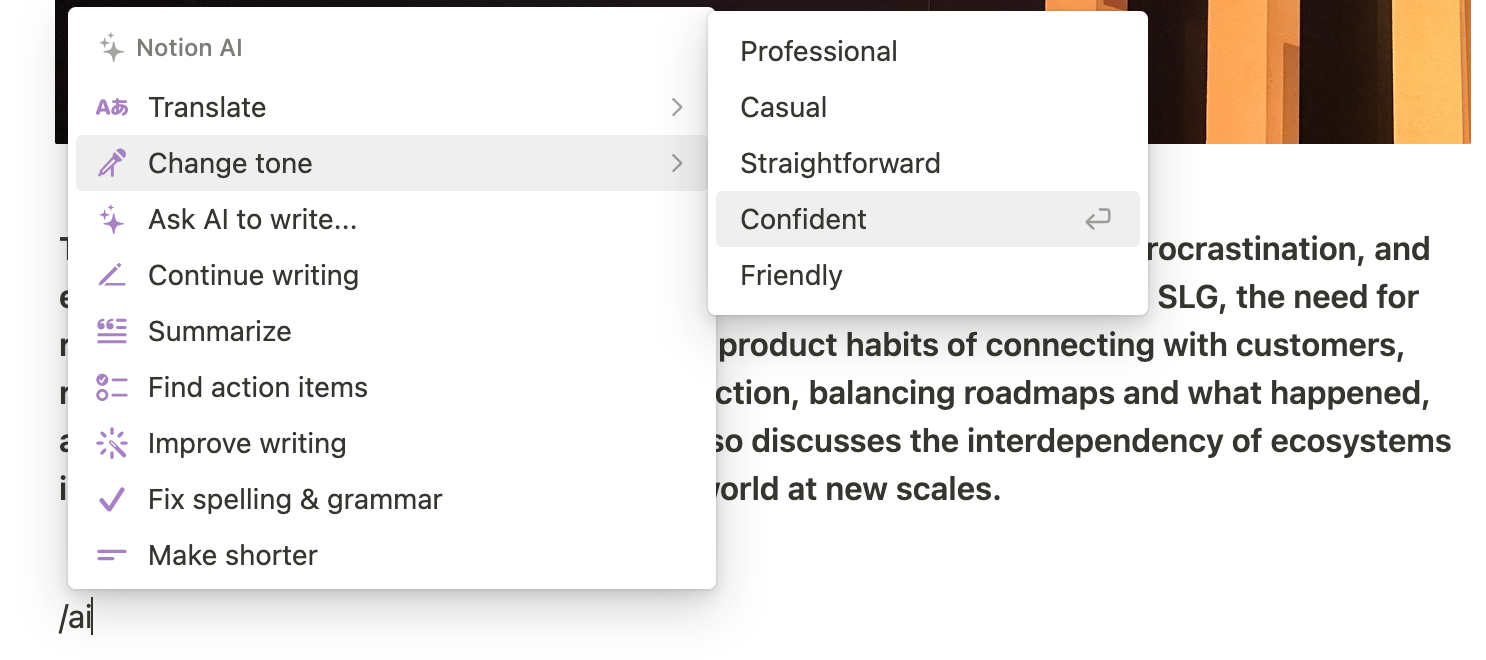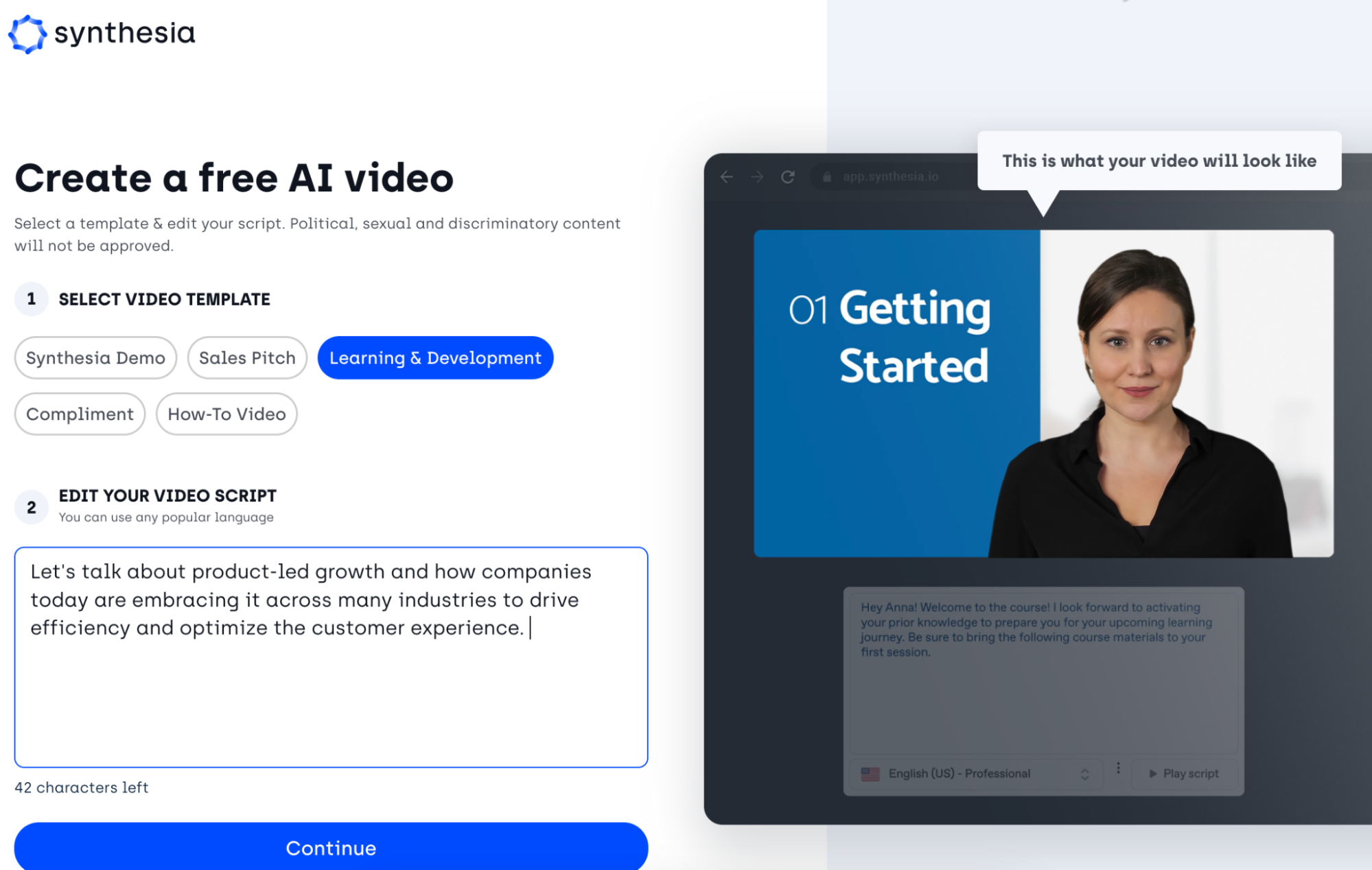3 AI features in apps you need to try
These companies use AI to make content creation easier.

AI is not a trend in technology, and if any of us think we can go a single day over the next year – at least – without hearing about it, or seeing it in the wild, we are mistaken. As companies embrace this new wave, their customers reap the benefits of speed, creativity, and overall efficiency while we all work towards a world where AI is responsibly and intelligently used.
So how effective are some of the latest features from companies leaning into AI tech? Aside from the best AI photo editing software, here are a few examples of AI tools and features I’ve explored and why they’re great (or why they might need a little more work before they find their way into my daily tech routine)...
01. Canva

Canva’s new AI-powered Magic Design offering goes beyond helping users design shiny new slide decks and graphics: it actually helps to craft the content itself. Type a few words as a starting point, and Magic Design cleverly populates your slides, giving you an instant first draft of your presentation.
Writer’s and creative block are perfectly normal when creating presentations, but starting from scratch is still a huge drain on time and energy, especially when you’re under pressure to deliver. As a procrastinator and someone who dreads staring at a blank slide, this tool blew me away.

With just a few very basic prompts on your topic of choice (in my case product-led growth), Magic Design generated something beautiful and consumable within seconds. What’s more, it felt like the content had been written by someone knowledgeable in the space, complete with good context and nuances. Of course, I needed to check and edit for complete accuracy, but it did more than a fine job as a first pass.
If you aren’t already a regular Canva user, this feature might just turn you into a devotee. It takes Canva’s user-friendly interface to a whole new level and is the perfect solution for time-poor creatives needing that first bit of momentum.
02. Notion

Notion’s AI capability is designed to streamline workflows across multiple platforms, allowing you to create new content, continue writing from where you left off, summarise what you’ve captured, and so much more. It’s a great companion tool for someone like me, who needs to make sense of my messy mind across both life and work.
Get the Creative Bloq Newsletter
Daily design news, reviews, how-tos and more, as picked by the editors.
Avid note-takers are probably already very familiar with Notion’s interface and spend a lot of time there. One great thing about Notion is the ability to centralise and recall all of your old notes – even those you might have forgotten – so you can intuitively incorporate them into the piece of content you’re currently working on.
With generative AI writing tools, including Notion AI, the goal is to give the user enough generated content, but not so much that they overthink about what to do next – it needs to leave them plenty of space to add their own style and information, and help to open up questions that help them know they’re going in the right direction.
Notion AI definitely delivers on this front: within seven seconds and just a few words of guidance from me, it generates copy containing high-level information I can easily build on without it feeling overwhelming. It also allows me to apply a style to the piece, so I can be more direct or friendly. This was a feature that took me a second to process.
Despite all the positives of Notion AI, it’s important to note that it’s still necessary for content creators to fact-check anything that’s generated by the feature. I spotted some inaccuracies in the content it generated for me, so the tool is just as vulnerable to the usual early-stage issues as others like it.
This AI feature doesn’t feel like it’s going to take my job – instead, it feels like an efficiency-booster, which is exactly what it’s designed for. As a product person, it delivers instant delight and makes me want to come back for more.
03. Synthesia

AI video creation platform Synthesia’s Avatars tool lets you create professional videos featuring digital, photo-realistic representations of humans. These can be entirely fictional AI-generated avatars, or they can be modelled on a real-life person within an organisation.
Having the ability to AI-generate lifelike human avatars is pretty incredible, particularly for industries like e-learning, training, and HR where the cost of producing high volumes of personalised video can really add up. With Synthesia’s tool, you upload a script, pick your preferred character, tone, language and physical appearance from drop-down menus and within seconds have a slick, functional video ready to go.
This feature may be a game-changer in situations where the information being presented benefits from the anonymity of a generic humanoid presenter. But for companies with close existing relationships with their customers, Synthesia’s avatars really lack the genuine human connection customers have come to expect from their interactions with the team.
Synthesia has over 50,000 customers and is now worth $1bn, so the appetite for this type of product is clear - but the avatars themselves still leave a lot to be desired. For example, although the avatar we generated looked and sounded great, at times her mouth didn’t line up to the words she was saying – she visually stumbled over words like ‘YouTube’.
Overall, this tool is a fantastic idea, but the end result needs more refining before it can exit the Uncanny Valley and reach its full potential.

Thank you for reading 5 articles this month* Join now for unlimited access
Enjoy your first month for just £1 / $1 / €1
*Read 5 free articles per month without a subscription

Join now for unlimited access
Try first month for just £1 / $1 / €1
Christine has been in product management for over 12 years, and has held both individual contributor and leadership roles across product management, product operations, and strategy. She’s led and coached teams through product-led transformation and continues to do so while mentoring product leaders on setting up foundations for strong teams, creating and delivering best practices, and standing up a system for PMs to do their best in. Christine enjoys giving back to the product community and looks at product management as a discipline rather than a role in technology.

